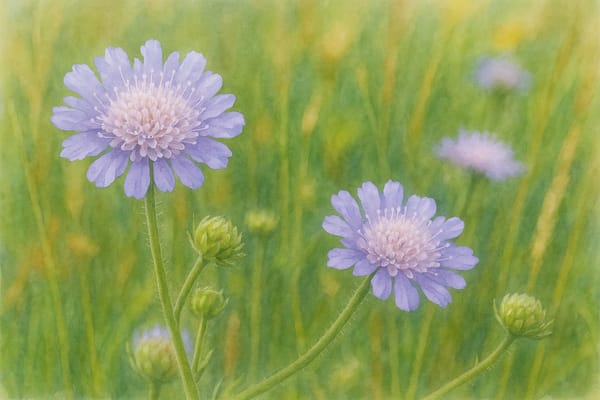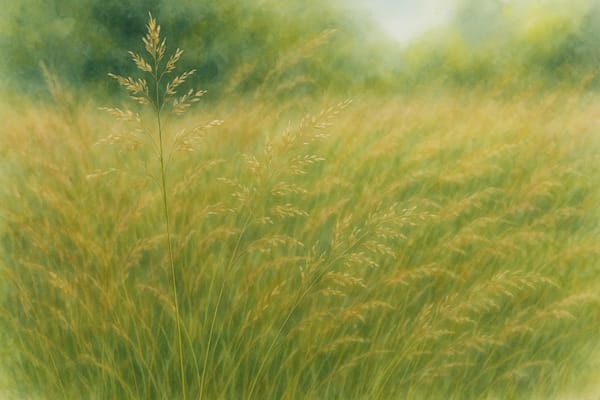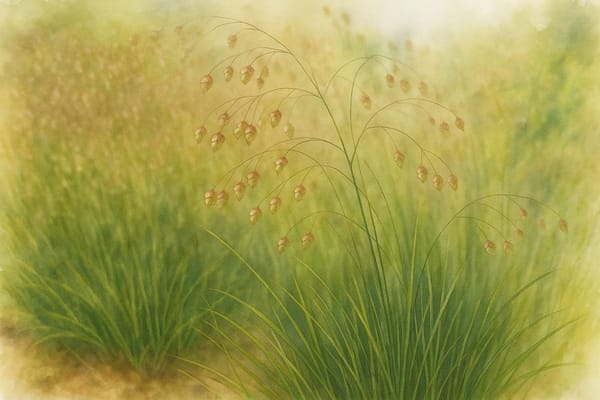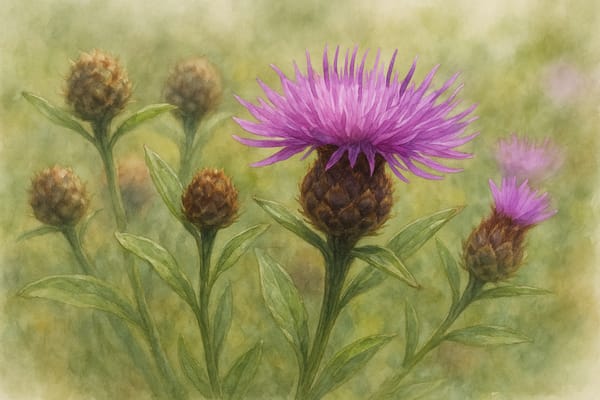Across Cornwall’s sun-touched grasslands and breezy coastal meadows, the soft lavender faces of Field Scabious (Knautia arvensis) tilt toward the light like tiny suns. These intricate flower heads, each a clustered whorl of pastel petals with pincushion grace, seem almost spun from sea-mist and chalk dust. Though often modest in presence, Field Scabious holds quiet significance—not only in the ecological fabric of Cornwall’s summer landscapes, but in the cultural and climatic rhythms shaping its future.
A Flowering of Time: Cornwall’s Extended Bloom
In Cornwall, Field Scabious enjoys a generous growing season. From June through to October, its delicate blooms persist, offering one of the longest wildflower displays in the region. This protracted flowering window is a gift of Cornwall’s mild maritime climate—where soft winters and temperate summers delay neither the start nor hasten the end of seasonal life.
Compared to more northerly or inland regions of Britain, where the same plant typically blooms from July to September, Cornwall’s version lingers longer. These extra weeks matter. They provide a critical food source for late-flying pollinators and a continuity of colour across meadows that might otherwise fade into seed by midsummer’s close. In this sense, Field Scabious is both seasonal beacon and ecological bridge—connecting early summer’s optimism with autumn’s slower tempo.
A Rooted Preference: Soil and Site in the Cornish Landscape
While Field Scabious may be adaptable, it thrives best in well-drained, calcareous or sandy soils, making Cornwall’s north coast dunes and light inland grasslands especially welcoming. Sites like Penhale Dunes or The Towans reveal the plant at its most vigorous, where slightly alkaline, low-fertility conditions allow it to outcompete lush grasses and show off its floriferous potential.
The plant’s dislike of heavy clay or waterlogged soil reflects its evolutionary background—preferring sun-drenched, low-nutrient habitats where its long taproot can anchor deep without drowning. In cultivated settings, this means success comes from avoiding rich composts, choosing neutral to alkaline soils, and positioning in full sun, ideally in wildflower borders, orchard fringes, or naturalistic planting schemes that echo its native environment.
Climate Crossroads: The Shifting Future of Field Scabious
Field Scabious is no stranger to change. A perennial of ancient meadows and evolving edges, it has endured centuries of agricultural transformation. But the pressures of climate change bring new challenges—some subtle, some profound.
Range and Resilience
Warming temperatures may expand Field Scabious' range into higher elevations or further north within Cornwall, allowing colonisation of areas once too cool. But this expansion may come at the cost of traditional lowland sites, especially if summers grow hotter and drier, reducing soil moisture and flowering success.
Timing and Mismatch
As spring advances earlier, Field Scabious may begin to bloom sooner than before. While this might seem benign, it risks decoupling the plant from its insect pollinators, whose lifecycles may not shift in parallel. Without timely visits from bees, butterflies, or hoverflies, its reproductive success could suffer, undermining future seed viability.
Water, Weather, and Competition
Perhaps the greatest risk lies in the erratic nature of future rainfall. Heavy downpours followed by droughts may stress plants, delay flowering, or reduce seed set. In such fragmented and volatile conditions, more aggressive or drought-adapted species could crowd out Field Scabious from some meadows.
Moreover, extreme events—like prolonged summer droughts or winter flooding—may damage entire populations, particularly in fragile coastal dune systems where shifting sands and salt spray already pose a challenge.
A Pollinator Powerhouse: Why This Wildflower Matters
To see Field Scabious in bloom is to witness a community in motion. Bees press deep into the florets, butterflies perch delicately on the flower discs, hoverflies zig-zag in lazy spirals above the blooms. Its nectar-rich structure and long blooming season make it a lifeline species for a wide range of insects—especially in late summer when few other wildflowers remain in bloom.
In Cornwall, where wildflower-rich meadows have declined, preserving plants like Field Scabious is about more than botanical interest. It is about maintaining pollinator networks, supporting farmland biodiversity, and keeping alive the sensory and cultural landscapes that define this part of Britain.
Hope in Action: How We Can Protect Field Scabious
As conditions shift, the future of Field Scabious in Cornwall may depend on our willingness to act with care, foresight, and creativity. A few key strategies can make a tangible difference:
1. Restore and Link Wildflower Habitats
Reconnect fragmented meadows with habitat corridors and stepping stone patches, allowing both Field Scabious and its insect allies to migrate, recolonise, and thrive. In Cornwall’s patchwork of coastal land, farmland, and commons, every restored patch matters.
2. Adjust Management for a Changing Climate
Move beyond fixed calendars. Hay cutting, grazing, and mowing should be timed to accommodate earlier or extended flowering seasons. In drought years, delays or skipped cuts may be vital to allow seeding and regrowth.
3. Monitor and Move
Tracking populations of Field Scabious—and their pollinators—will help conservationists understand which habitats remain suitable. Where needed, assisted migration to newly viable areas may be necessary, particularly at higher elevations or further inland.
4. Plant for Place
In urban gardens, road verges, school grounds, and community parks, Field Scabious can become both symbol and sanctuary. Its low-maintenance nature and graceful appearance make it ideal for public planting schemes, while its presence fosters public engagement with Cornwall’s native flora.
5. Engage the Public
When gardeners and landowners understand the value of Field Scabious, they are more likely to plant, protect, and promote it. Citizen science, seed giveaways, and storytelling—like this article—help weave a culture of care around this humble wildflower.
Looking Ahead: A Cornish Companion for Changing Times
In many ways, Field Scabious embodies the fragile strength of Cornwall’s natural beauty. It is tough yet elegant, widespread yet vulnerable, quietly vital and visually joyful. Whether growing wild among sunlit dunes or nurtured in a thoughtful garden border, it connects us to seasonal rhythms, pollinator lifeways, and the subtle wonders of place.
In a warming world where both species and stories risk being lost, Field Scabious reminds us of what blooms when we pay attention—when we steward what’s already here, and prepare gently for what’s to come.











